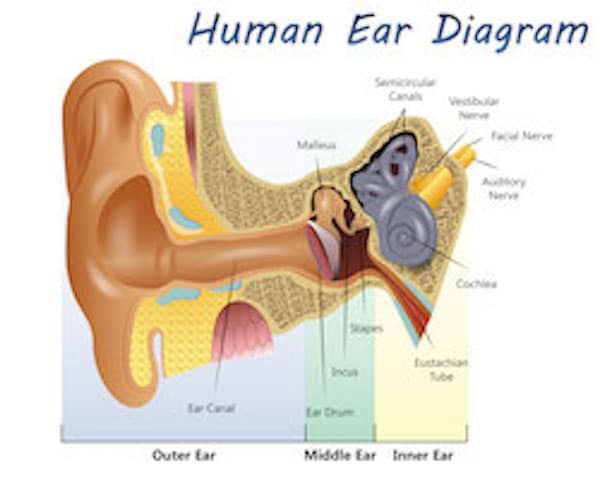Have you ever looked at something that makes sound and wondered how the whole process works?
How does sound travel through the air, enter your ear and somehow let your brain know you heard something?
While many people take this process for granted, there are almost 48 million people in Los Angeles and around the country that don’t. These are the people with hearing loss.
In order to fully understand your hearing loss, your Los Angeles audiologist recommends first learning how hearing works.
The Three Parts of the Ear

The ear is broken down into three sections: the inner, middle and outer ear. Each part plays an important role in hearing.
The outer ear represents the visible portion of the ear, which is responsible for collecting sound waves and funneling them into the ear canal.
At the end of the ear canal is the tympanic membrane, also called the eardrum.
When the sound wave hits the eardrum, the sound wave causes it to vibrate.
The middle ear includes everything between the eardrum and the auditory canal.
When a sound wave hits the tympanic membrane, the vibration travels through a collection of bones called the ossicles.
The ossicles are made up of the malleus, incus and stapes. These bones are attached to the oval window, which connects the middle and inner ear.
The final section of the ear is the inner ear. It contains the cochlea and the auditory nerve. The cochlea is lined with hairs and filled with fluid.
The vibration transmitted from the eardrum causes the hairs within the cochlear to move.
This movement creates an electric impulse, which travels down the auditory nerve to the brain. The brain then interprets this electrical input as sound.
Types of Hearing Loss
Now that we have explained how hearing works, let’s go into the types of hearing loss. There are three types: conductive, sensorineural and mixed.
Conductive hearing loss is caused by problems in the outer ear, ear canal, eardrum or middle ear. These problems can be caused by any of the following:
- Ear infection
- Fluid in the ears
- Malformation or abnormalities of the outer or middle ear
- Impacted earwax
- Foreign object in the ear
- Allergies
- Perforated eardrum
- Otosclerosis
- Benign tumors
Sensorineural hearing loss, also known as nerve deafness, is caused by damage to the inner ear. This type of hearing loss may be caused by any of these:
- Noise exposure
- Head trauma
- Aging (presbycusis)
- Viral disease
- Autoimmune ear disease
- Meniere’s disease
- Malformation or abnormality of the inner ear
- Otosclerosis
- Tumors
Mixed hearing loss is (you guessed it) a combination of both. This means you have a problem with your inner ear as well as your outer or middle ear.
If you think you may have hearing loss, now is the time to do something about it. Contact your Los Angeles audiologist today to get started.
Related Hearing Aids Posts:
House Providence Hearing Health Center
2100 West 3rd Street, Los Angeles, CA 90057
(213) 483-9930
https://houseinstitute2.fm1.dev